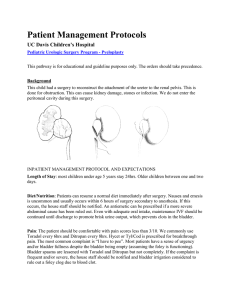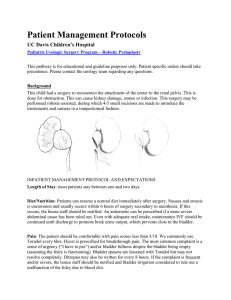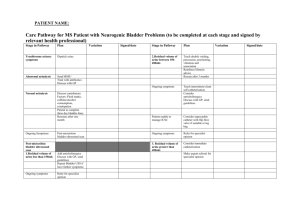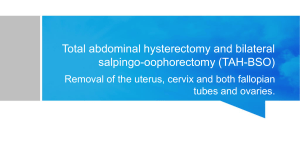Patient Management Protocols UC Davis Children’s Hospital
advertisement
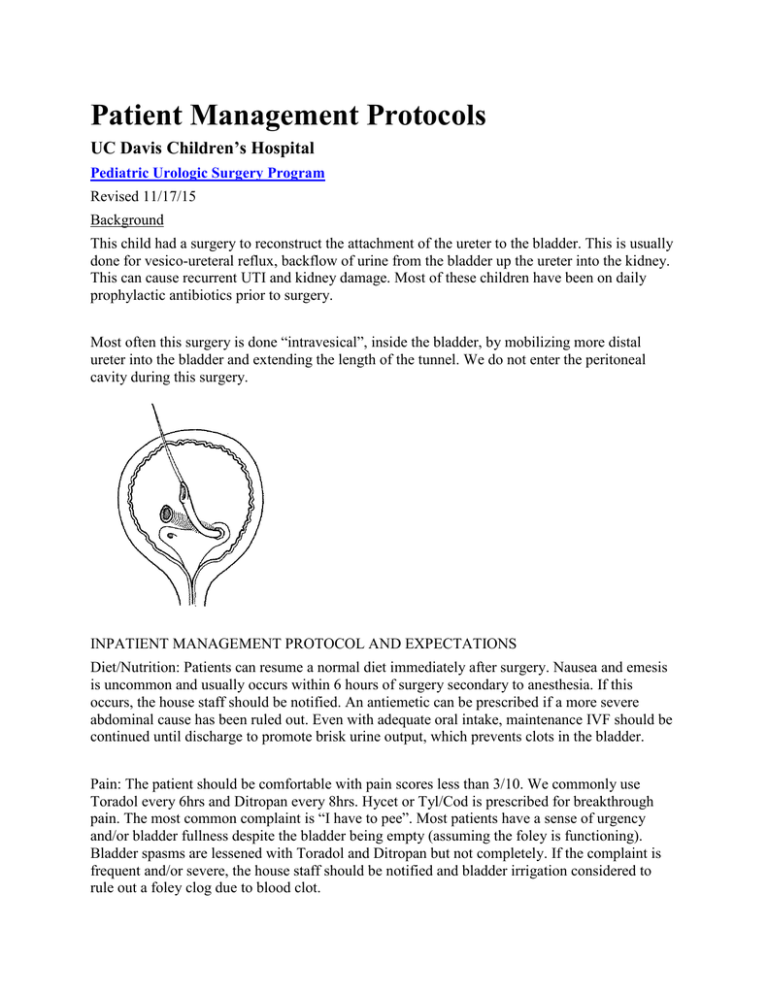
Patient Management Protocols UC Davis Children’s Hospital Pediatric Urologic Surgery Program Revised 11/17/15 Background This child had a surgery to reconstruct the attachment of the ureter to the bladder. This is usually done for vesico-ureteral reflux, backflow of urine from the bladder up the ureter into the kidney. This can cause recurrent UTI and kidney damage. Most of these children have been on daily prophylactic antibiotics prior to surgery. Most often this surgery is done “intravesical”, inside the bladder, by mobilizing more distal ureter into the bladder and extending the length of the tunnel. We do not enter the peritoneal cavity during this surgery. INPATIENT MANAGEMENT PROTOCOL AND EXPECTATIONS Diet/Nutrition: Patients can resume a normal diet immediately after surgery. Nausea and emesis is uncommon and usually occurs within 6 hours of surgery secondary to anesthesia. If this occurs, the house staff should be notified. An antiemetic can be prescribed if a more severe abdominal cause has been ruled out. Even with adequate oral intake, maintenance IVF should be continued until discharge to promote brisk urine output, which prevents clots in the bladder. Pain: The patient should be comfortable with pain scores less than 3/10. We commonly use Toradol every 6hrs and Ditropan every 8hrs. Hycet or Tyl/Cod is prescribed for breakthrough pain. The most common complaint is “I have to pee”. Most patients have a sense of urgency and/or bladder fullness despite the bladder being empty (assuming the foley is functioning). Bladder spasms are lessened with Toradol and Ditropan but not completely. If the complaint is frequent and/or severe, the house staff should be notified and bladder irrigation considered to rule out a foley clog due to blood clot. Drains: All patients will have a foley catheter. The catheter should be secured to the patient’s leg with tape. This should be checked each time the bag is emptied. We expect the urine to be red or pink with occasional small clots. If the urine is deep red or the clots are large, the house staff should be notified. Activity: We prefer patients to stay in bed. The order should be for “bedrest”. The length of stay is usually one day so ambulation is not necessary. Ambulation will often stimulate bladder irritation from the catheter. If a child insists on getting up, this is allowable. DISCHARGE CRITERIA: Tolerating liquids No fever Pain scale less than or equal to 3/10 DISCHARGE INSTRUCTIONS: Diet: Regular Activity: advance as tolerated, no strenuous activity or PE for 4 weeks Wound care: none, glue will fall off within 2 weeks Bathing: normal Medications: Hycet, Tylenol or Ibuprofen prn, Ditropan 5mg three times per day prn bladder spasms for up to 2 months Follow up: Pediatric Urology NP clinic 6wks with sonogram same day or just prior to apt This policy and procedure has been reviewed and approved by: Eric A. Kurzrock, M.D. Jennifer Yang, M.D. This pathway is not meant to be applied for patients not under our care. This is only an educational document for residents and nurses caring for our patients. The orders placed by the care team take precedent over this pathway. But, knowledge of this pathway will help the nurses to understand and recognize deviations.
